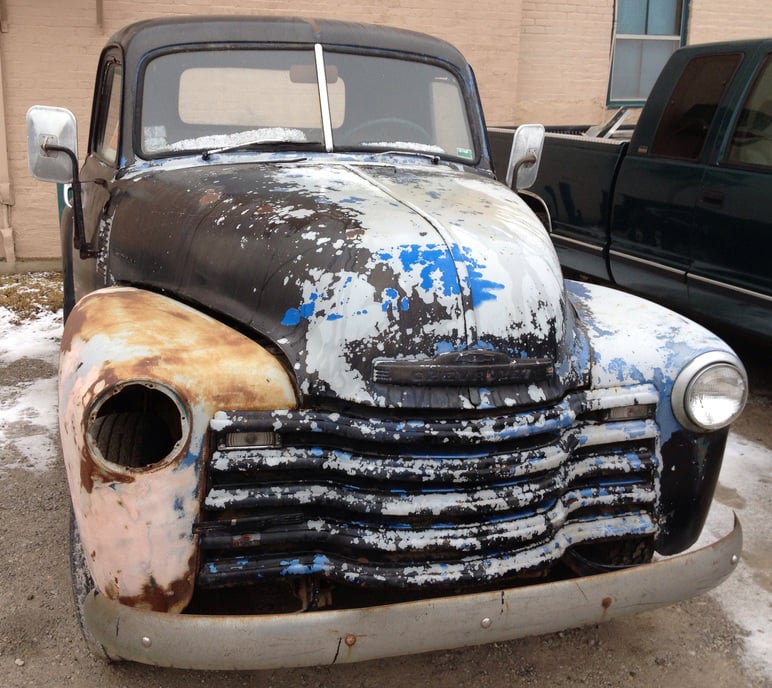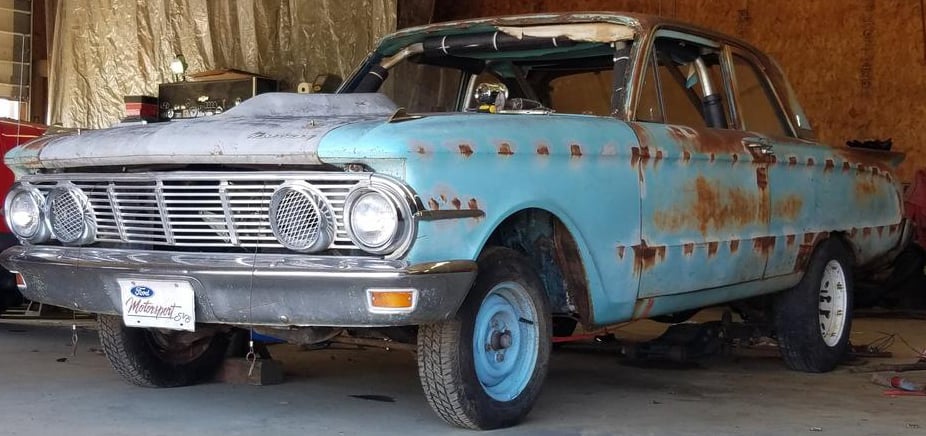
Noticing rust on your vehicle is enough to ruin your day, especially if you love your vehicle. When it comes to finding rust, the severity of the situation boils down to the type of rust that you're dealing with. Typically, rust is usually found on the surface and can be cleaned and painted to prevent further damage. However, deep rust is a different beast. This type of rust is challenging to fix, and it can result in permanent, sometimes irreparable damage to critical areas.
Dealing with rust is a hassle, but knowing the signs and the type of rust you're dealing with will help you tackle the issue faster. Read on to learn about deep rust and surface rust below.
Understanding the Causes of Rust
Rust is a type of corrosion and it develops on surfaces that are exposed to oxygen and water. That said, only metal surfaces that contain iron can develop rust. What causes rust to develop is the iron in the metal interacting with water and oxygen. This electrochemical reaction is known as oxidation and causes rust to develop on surfaces.
Learn more about each factor that contributes to rust below.
Oxygen
When it comes to rust you can't have it without oxygen. Whether the oxygen comes from air or water, the oxidation process must begin. While oxygen alone can lead to rust because moisture is in the air, the level of moisture in the oxygen is what influences rust.
Water
Like oxygen, water is necessary for rust to develop. Water that contributes to rust doesn't even have to be liquid water that you can see. In fact, water vapor and humidity in the air will continue to rust.
Iron
Only metal that contains iron, known as ferrous metals, will rust. Some examples of ferrous metals include cast iron, nickel, steel, carbon steel, and chromium. Metals that don't contain iron won't rust and the amount of iron mixed with a metal influences how much rust can develop.
These are the three main factors that contribute to rust.
How To Identify Surface Rust
Surface rust is found on the top of metals that contain iron, hence the name "surface rust". It's a type of corrosion that develops from iron oxidation, which occurs when iron, oxygen, and water are mixed. You'll find surface rust in locations that are exposed to the elements but it's important to check multiple places because there is oxygen and water in the air.
What Does Surface Rust Look Like?
Surface rust is a thin layer of rust that develops on metals that contain iron. It's usually a brown or reddish color and it's flakey or dusty. In fact, you can usually remove some surface rust just by touching it. However, it's better to use sandpaper or a rust-remover product.
If the rust comes off with sandpaper or a rust-removing product, that's confirmation that you're dealing with surface rust.

Where Does Surface Rust Develop?
Surface rust can develop anywhere on your vehicle that's exposed to the elements. The most popular places to check include the following:
- Rocker panels
- Wheel wells
- Undercarriage
- Exhaust components
- Roll cages
Locations that are on the exterior of your vehicle are the most at-risk and driving through water, rain, or snow increases the risk of surface rust developing.
How to Identify Deep Rust
Deep rust is an advanced stage of rusting that occurs when iron is exposed to excessive levels of oxygen and water. This may also happen over time if you fail to clean surface rust and maintain your vehicle's metal components. Fortunately, there are several ways to identify deep rust.
What Does Deep Rust Look Like?
Deep rust looks similar to surface rust but with a few key differences. While it has a similar brown or reddish color, the metal will look weaker. You may also notice holes in the metal or cracks along the edges.
You can also identify deep rust by removing some surface rust to check the color of the metal. If you notice a lot of surface rust in a particular region, removing it before it progresses to deep rust is important. To determine its deep rust, you can poke the surface rust with a screwdriver or another tool. Applying pressure with the screwdriver will be enough to make a hole in the metal if you're dealing with deep rust.
Where Does Deep Rust Develop?
Deep rust will develop particularly in areas where the metal is thinner, or where there are existing holes through the metal. When iron is exposed to oxygen and water, rust will start to develop, and ignoring this rust can leave you with deep rust.
If you store your vehicle in humid conditions or there is a pool of water somewhere on your car, this also increases the risk of deep rust.
Treating surface rust quickly is essential to prevent deep rust. Once the iron is experiencing deep rust, you'll likely have to replace it.
Preventative Measures Against Rust
Avoiding rust is possible as long as you know what to do. Choosing the appropriate type of metal can also help you avoid rust. We list some tips you can follow below to reduce the chance of developing surface rust or deep rust.
Keep the Metal Dry
One of the best ways to avoid rust is to remove moisture from the equation. Rust only develops when oxygen, water, and iron mix. Therefore, removing moisture from the metal will slow down the oxidation process. Store your vehicle in a garage with a dehumidifier for the best results and wipe down any components after driving through rain or water.

Use a Rust-Resistant Coating
Rust-resistant coatings are great at keeping your iron healthy. Several types of coatings are available but most options are a type of grease, paint, or oil. Depending on your needs each type of coating is a viable option.

Choose the Right Metals
When replacing components on your vehicle make sure you choose the right metals. Using galvanized metals (metals that contain zinc) and metals that contain chromium are less likely to rust. Galvanized metals don't rust because the zinc wears down before the iron, whereas stainless steel contains chromium, which is a corrosion-resistant element.
Remove Surface Rust
Want to avoid a situation where rust progresses to deep rust? Make sure you remove surface rust from your vehicle when you notice it. Use sandpaper or a wire brush to remove surface rust and use a lemon juice solution to rinse the surface. Vinegar and salt are also effective for removing rust.


Following these tips and cleaning surface rust before it becomes deep rust are the best preventive measures. You’ll find products to treat and prevent rust before it begins at JEGS, as well as replacement panels and parts if you can’t save them.





